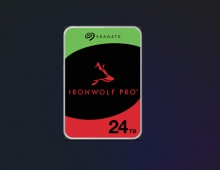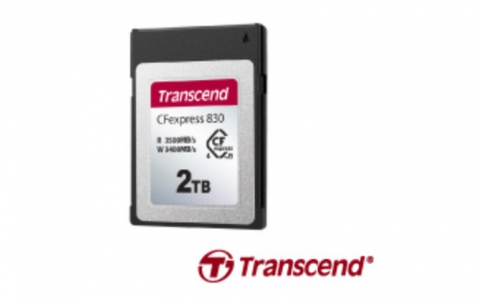
Big challenges for small drives
As CNet reports, for disk drives to make a splash in cell phones, they'll have to handle a crash or two...
So said Rob Scott, a manager for phone maker Nokia, at a disk drive industry conference on Wednesday. Samsung has already introduced a cell phone with a tiny disk drive to hold data. But Scott indicated that phones with drives will not be a hit unless they can withstand a fair amount of wear and tear. "People drop their digital camera, they expect it to be broken," he said. "People drop their cell phone, they expect it to work."
Speakers at the conference made the case that small drives could have a big future in consumer devices, but said hard-drive manufacturers face stiff challenges in areas such as capacity, ruggedness and power consumption.
Already, the consumer arena has become a significant business for drive makers, who for years focused on products for personal computers and the larger computers that run in data centers. Hard drives are finding their way into digital video recorders, which allow consumers to record and temporarily pause live broadcasts; digital music players, such as Apple's popular iPod; and now portable media players that show video.
Many of the drives for consumer devices have disks smaller than the 3.5-inch diameter platters typically found in desktop PC drives. Apple's iPod, for example, uses a 1.8-inch drive from Toshiba. Its iPod mini employs a 1-inch drive from Hitachi Global Storage Technologies.
Seagate Technology also recently entered the minidrive market with 1-inch drives of its own. In a presentation, Seagate vice president Gary Gentry predicted that roughly 150 million drives of 1.8 inches or smaller will ship in 2010, up from fewer than 20 million this year. But Gentry cautioned that drive makers must work to customize their products for consumer uses. He said manufacturers face "big challenges around robustness, around performance, around battery life."
Drive makers also would be wise to base their efforts on industry standards, Gentry said, and he gave a plug for a new initiative to create a drive interface standard specific to handheld devices.
Another issue is roominess, said David Proctor, a Microsoft manager focused on its Portable Media Center product. Proctor estimated that by 2007, drives for portable media players will have to hold 124 gigabytes--well above today's small drive capacities--to store video.
A smart vision also is important for drive makers, said Amy Dalphy, manager of hard disk drives in Toshiba's storage device division. Dalphy argued that drive makers should be working with manufacturers to create an "experience" for consumers, akin to a trip to Disneyland or a coffee at Starbucks. It would be a red flag if a hard-drive maker's customer planned to sell only 50,000 units of a product in a year, she said. "When a customer talks to you with that kind of vision, they need your help," she said.
In vying to serve as the data repositories for new generations of consumer devices, hard drives face competition from flash memory, a semiconductor product that has been more expensive per gigabyte than drives. Another threat is the possibility that phones and other mobile devices themselves won't store data such as songs. Instead, the devices will receive streams of information wirelessly, with the actual data sitting on a PC or the Internet.
But Ian Vogelesang, vice president at Hitachi, argued that consumers are more likely to download information to their devices--using a hard drive, say--and listen to songs or watch video at their leisure. "I think it's exactly the opposite" of the live streaming scenario, he said.
Speakers at the conference made the case that small drives could have a big future in consumer devices, but said hard-drive manufacturers face stiff challenges in areas such as capacity, ruggedness and power consumption.
Already, the consumer arena has become a significant business for drive makers, who for years focused on products for personal computers and the larger computers that run in data centers. Hard drives are finding their way into digital video recorders, which allow consumers to record and temporarily pause live broadcasts; digital music players, such as Apple's popular iPod; and now portable media players that show video.
Many of the drives for consumer devices have disks smaller than the 3.5-inch diameter platters typically found in desktop PC drives. Apple's iPod, for example, uses a 1.8-inch drive from Toshiba. Its iPod mini employs a 1-inch drive from Hitachi Global Storage Technologies.
Seagate Technology also recently entered the minidrive market with 1-inch drives of its own. In a presentation, Seagate vice president Gary Gentry predicted that roughly 150 million drives of 1.8 inches or smaller will ship in 2010, up from fewer than 20 million this year. But Gentry cautioned that drive makers must work to customize their products for consumer uses. He said manufacturers face "big challenges around robustness, around performance, around battery life."
Drive makers also would be wise to base their efforts on industry standards, Gentry said, and he gave a plug for a new initiative to create a drive interface standard specific to handheld devices.
Another issue is roominess, said David Proctor, a Microsoft manager focused on its Portable Media Center product. Proctor estimated that by 2007, drives for portable media players will have to hold 124 gigabytes--well above today's small drive capacities--to store video.
A smart vision also is important for drive makers, said Amy Dalphy, manager of hard disk drives in Toshiba's storage device division. Dalphy argued that drive makers should be working with manufacturers to create an "experience" for consumers, akin to a trip to Disneyland or a coffee at Starbucks. It would be a red flag if a hard-drive maker's customer planned to sell only 50,000 units of a product in a year, she said. "When a customer talks to you with that kind of vision, they need your help," she said.
In vying to serve as the data repositories for new generations of consumer devices, hard drives face competition from flash memory, a semiconductor product that has been more expensive per gigabyte than drives. Another threat is the possibility that phones and other mobile devices themselves won't store data such as songs. Instead, the devices will receive streams of information wirelessly, with the actual data sitting on a PC or the Internet.
But Ian Vogelesang, vice president at Hitachi, argued that consumers are more likely to download information to their devices--using a hard drive, say--and listen to songs or watch video at their leisure. "I think it's exactly the opposite" of the live streaming scenario, he said.





















